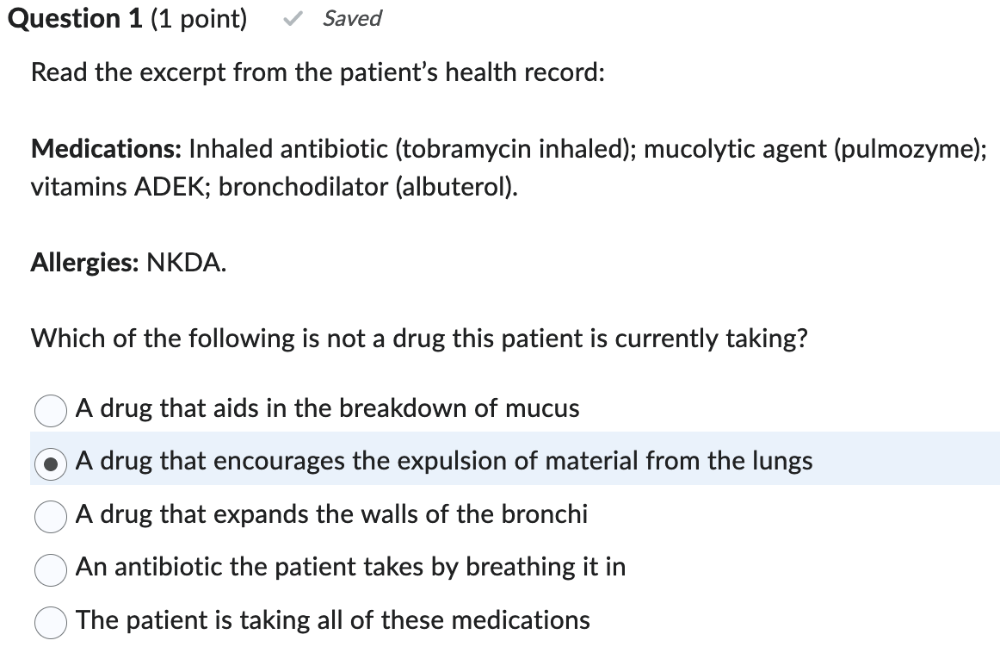
Read the excerpt from the patient’s health record:
Medications: Inhaled antibiotic (tobramycin inhaled);
mucolytic agent (pulmozyme); vitamins ADEK; bronchodilator
(albuterol).
Allergies: NKDA.
Which of the following is not a drug this patient is currently taking?
A drug that encourages the expulsion of material from the lungs
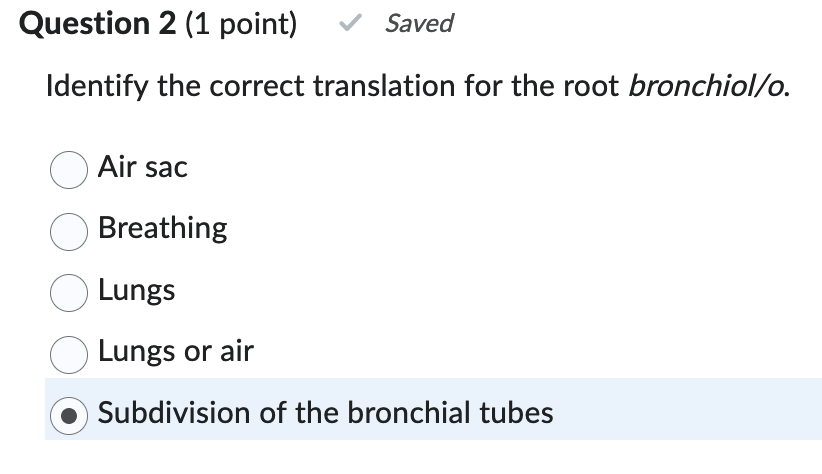
Identify the correct translation for the root bronchiol/o.
Subdivision of the bronchial tubes
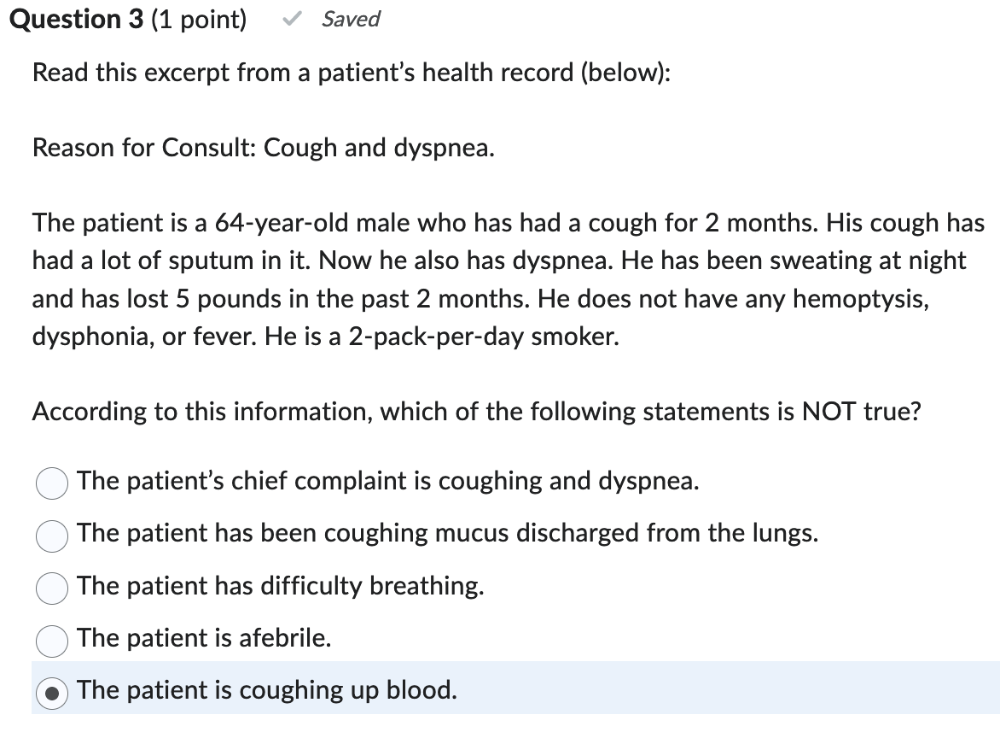
Read this excerpt from a patient’s health record (below):
Reason for Consult: Cough and dyspnea.
The patient is a 64-year-old male who has had a cough for 2 months. His cough has had a lot of sputum in it. Now he also has dyspnea. He has been sweating at night and has lost 5 pounds in the past 2 months. He does not have any hemoptysis, dysphonia, or fever. He is a 2-pack-per-day smoker.
According to this information, which of the following statements is NOT true?
The patient is coughing up blood.
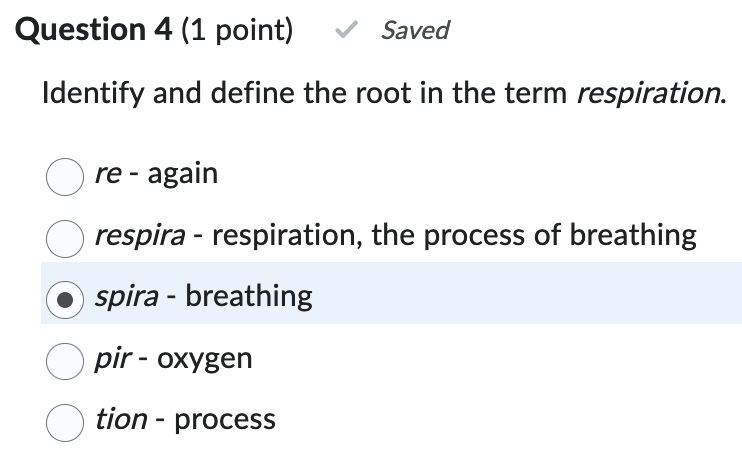
Identify and define the root in the term respiration.
spira - breathing
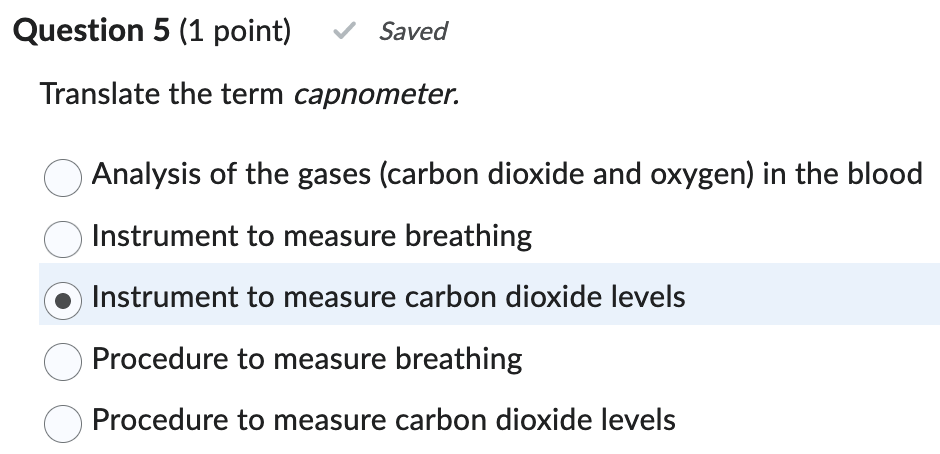
Translate the term capnometer.
Instrument to measure carbon dioxide levels
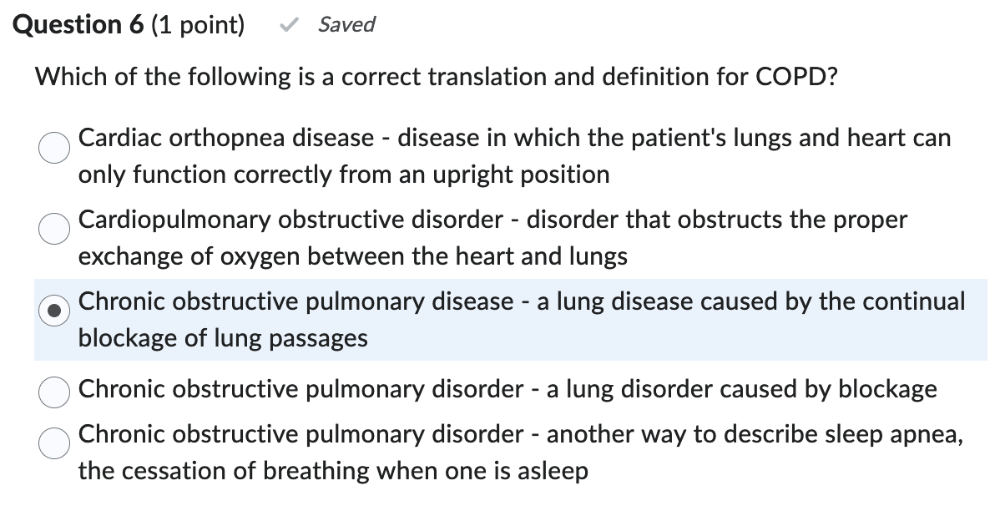
Which of the following is a correct translation and definition for COPD?
Chronic obstructive pulmonary disease - a lung disease caused by the continual blockage of lung passages
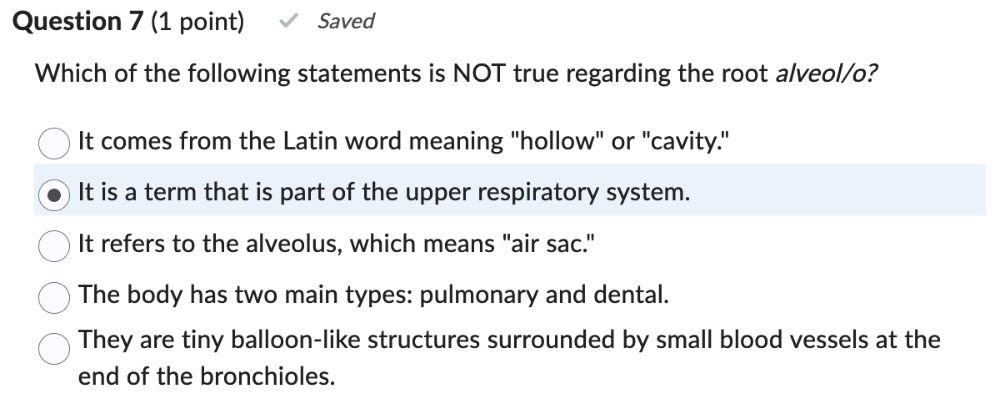
Which of the following statements is NOT true regarding the root alveol/o?
It is a term that is part of the upper respiratory system.
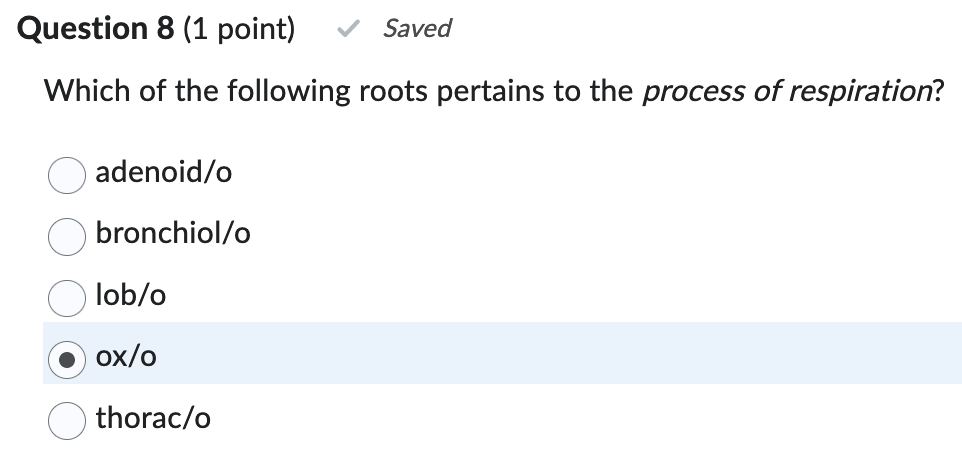
Which of the following roots pertains to the process of respiration?
ox/o
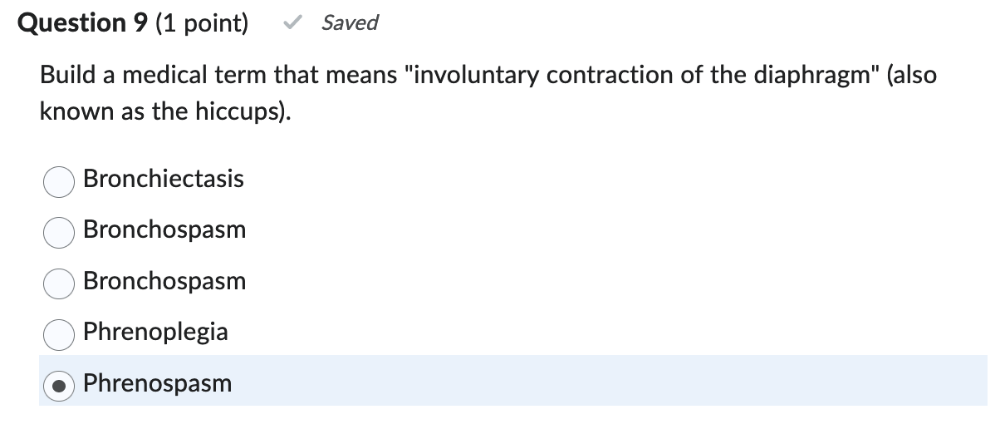
Build a medical term that means "involuntary contraction of the diaphragm" (also known as the hiccups).
Phrenospasm
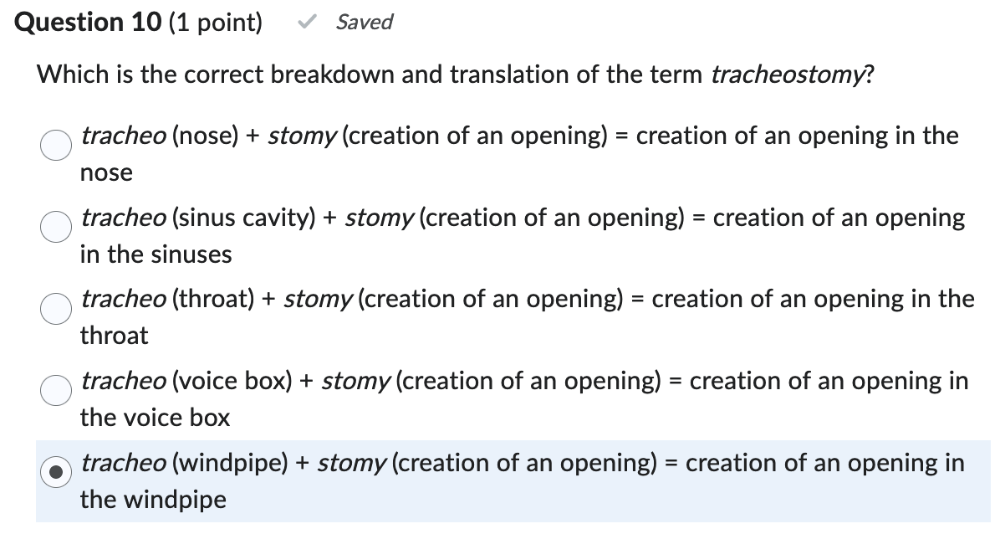
Which is the correct breakdown and translation of the term tracheostomy?
tracheo (windpipe) + stomy (creation of an opening) = creation of an opening in the windpipe
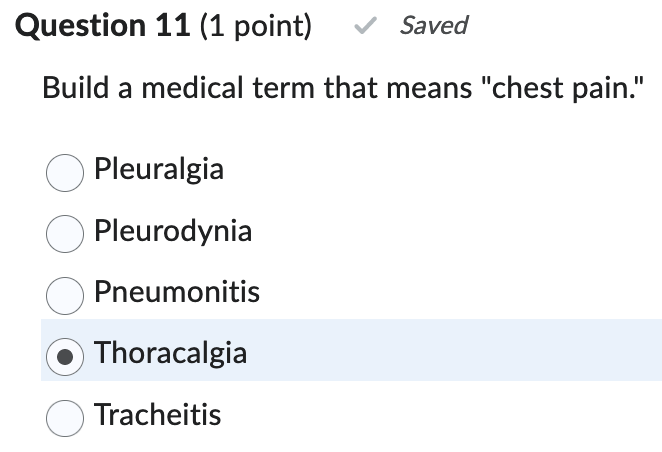
Build a medical term that means "chest pain."
Thoracalgia
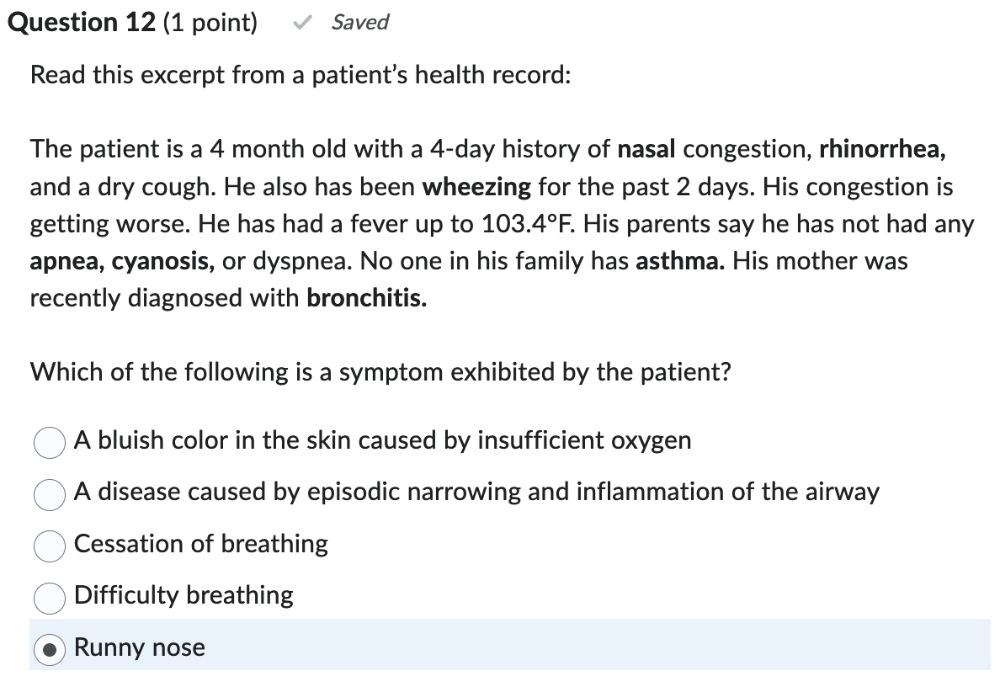
Read this excerpt from a patient’s health record:
The
patient is a 4 month old with a 4-day history of
nasal congestion, rhinorrhea, and a
dry cough. He also has been wheezing for the past 2
days. His congestion is getting worse. He has had a fever up to
103.4°F. His parents say he has not had any apnea,
cyanosis, or dyspnea. No one in his family has
asthma. His mother was recently diagnosed with
bronchitis.
Which of the following is a
symptom exhibited by the patient?
Runny nose
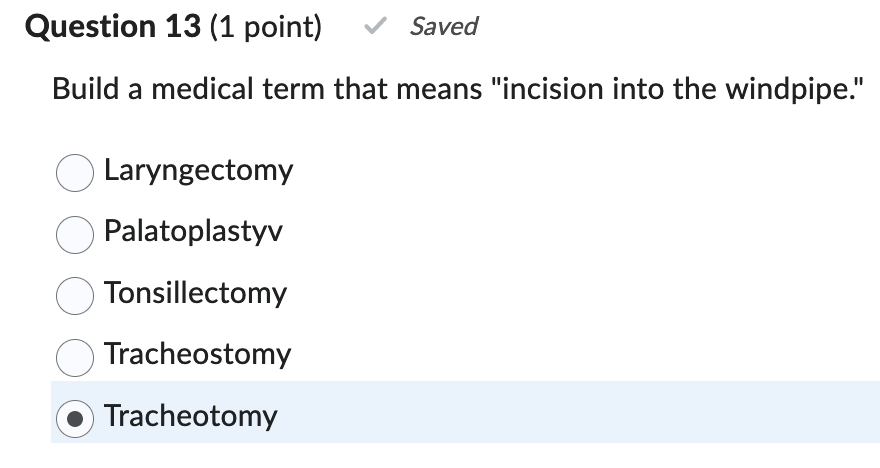
Build a medical term that means "incision into the windpipe."
Tracheotomy
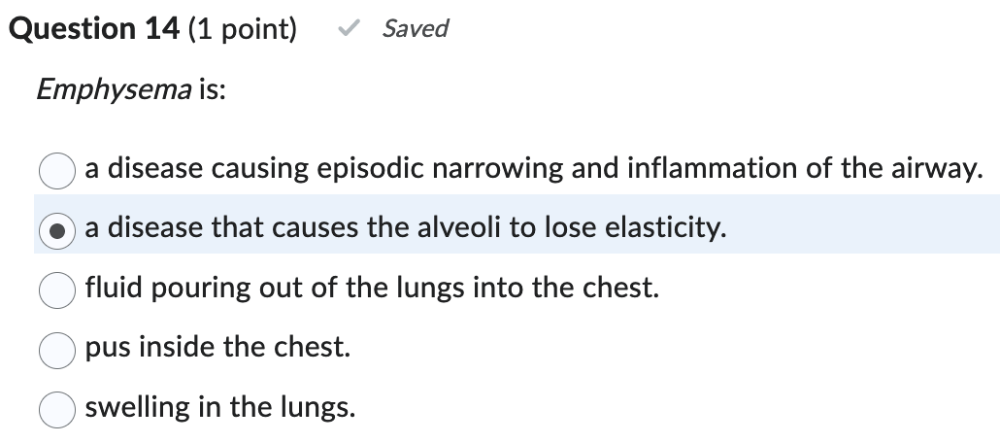
Emphysema is:
a disease that causes the alveoli to lose elasticity.
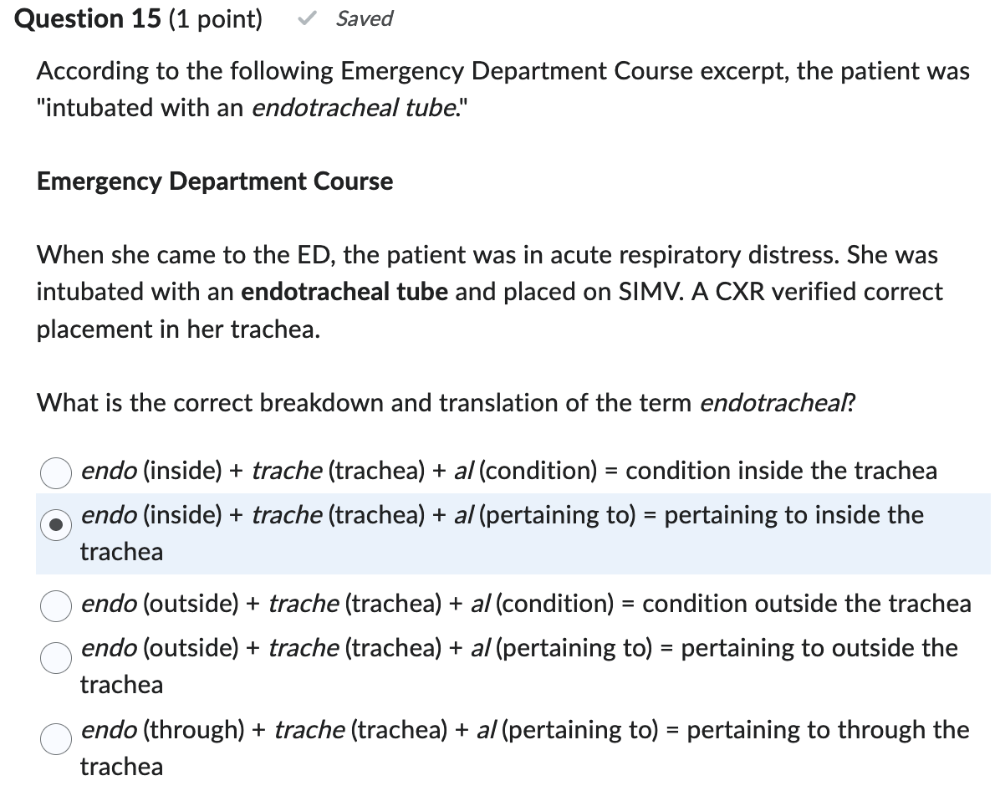
According to the following Emergency Department Course excerpt, the
patient was "intubated with an endotracheal tube."
Emergency Department Course
When she came to the ED, the patient was in acute respiratory
distress. She was intubated with an endotracheal tube
and placed on SIMV. A CXR verified correct placement in her trachea.
endo (inside) + trache (trachea) + al (pertaining to) = pertaining to inside the trachea
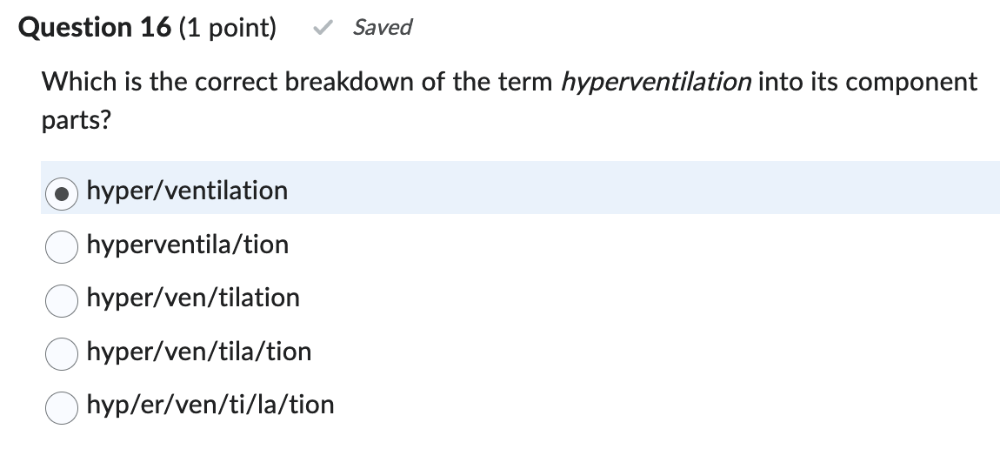
Which is the correct breakdown of the term hyperventilation into its component parts?
hyper/ventilation
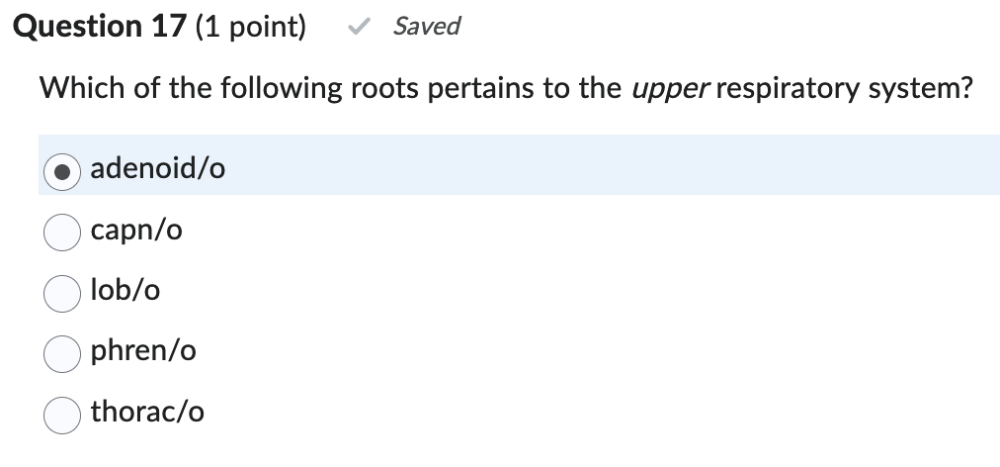
Which of the following roots pertains to the upper respiratory system?
adenoid/o
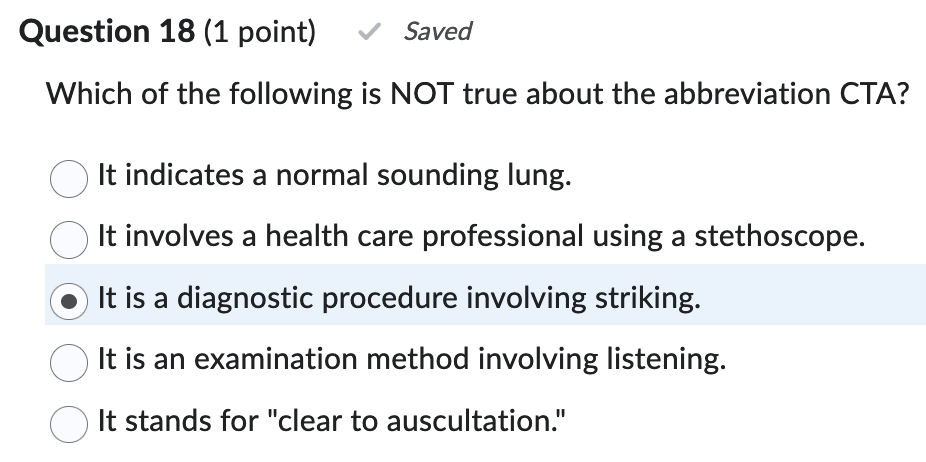
Which of the following is NOT true about the abbreviation CTA?
It is a diagnostic procedure involving striking.
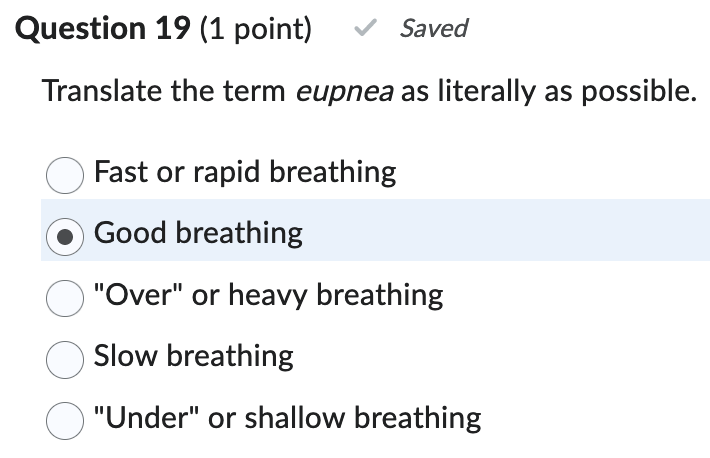
Translate the term eupnea as literally as possible.
Good breathing
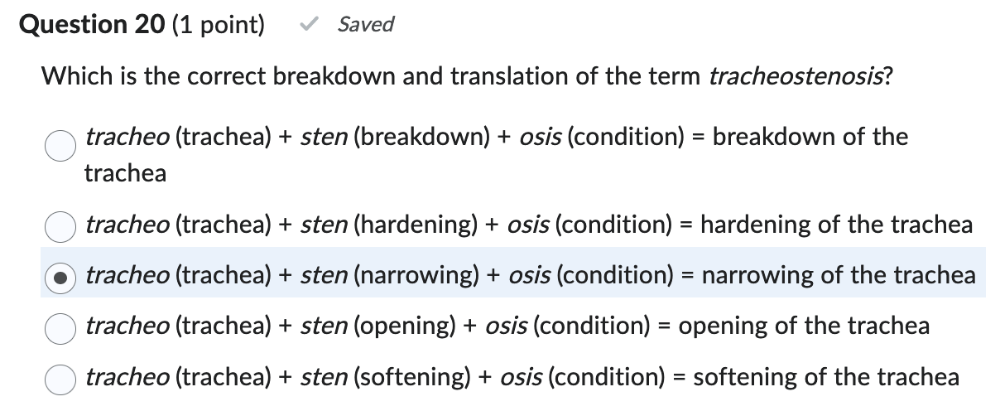
Which is the correct breakdown and translation of the term tracheostenosis?
tracheo (trachea) + sten (narrowing) + osis (condition) = narrowing of the trachea
Note from Professor
- Module 10 Quiz
Good evening,
A few quiz reminders:
Please read carefully. Double check yourself when you see the word "NOT" and read all the choices before you answer.
Remember the difference between a symptom and a disease. A symptom is something the patient feels (2.2). A disease is the condition causing the symptoms.
A few Quiz 10 clarifications:
Hyperventilation is broken down in your text by hyper (over)/ventil (breathing)/ation (process). This was not one of the answers.
An obstructive lung disorder "caused by a blockage" makes it difficult for someone to exhale. A restrictive lung disorder "limits air into the lungs" because the lungs are restricted from expanding. This makes it difficult to fully expand the lungs while inhaling.
A PE is a pulmonary embolism. This is a "blockage of the pulmonary blood supply" caused by an embolus. Remember from Module 9, an embolism is a "mass of matter in the blood" (9.1). A pleural effusion is when fluid builds up between the tissue in the lungs and chest cavity (pleural space). According to your text, fluid is pouring into the pleura (10.3).
My best to you,
Mrs. Cutliffe